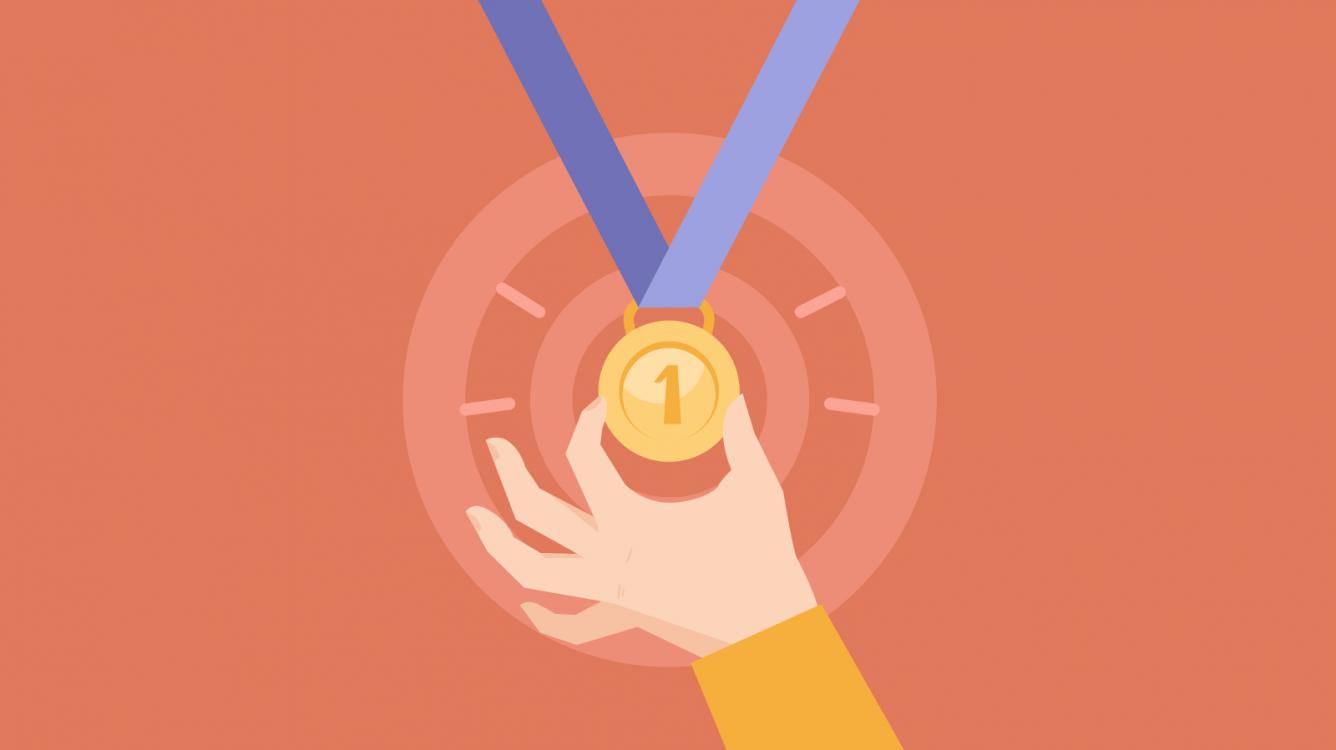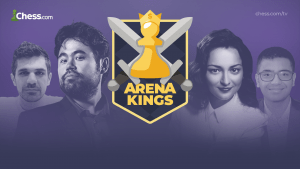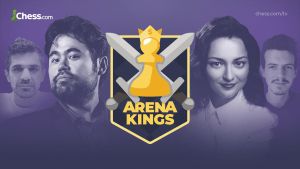
Study Plan For Intermediate Players: The Endgame!
Target Skill Range: Intermediate (Rated 1400-1799)
Arrive at your final chess destination with the knowledge you need to win!
Tasks:
- Increase your knowledge of fundamental endgames.
- Improve your endgame technique.
- Complete these endgame lessons.
- Learn to play these practical endgames with Chess.com/drills.
- Practice these exercises with a partner.
- Solidify your endgame play with practical review.
- Take the quiz!
Knowledge of the endgame improves your decision making in all other facets of chess!
1. Increase your knowledge of fundamental endgames.
Knowing what's around the corner better than your opponent is something that separates the "Pros" from the "Average Joes"; it's more important than amateurs realize. Often, an 1800 player mistakes his master opponent's ability to outplay him with the assumption that his opponent calculated fifty moves ahead.
That simply isn't true! What is true is that your opponent's knowledge of endgames made his/her decision making skills in the middlegame (and sometimes even the opening) much better. Learning a select list of must know positions will improve your endgame play and intuition even in positions you haven't seen yet. Master the following positions with this goal in mind. Good luck!
Watch the video lectures below, but most importantly, practice each "key" position (look for these links on the right side of the video player) against our Computer Opponent before moving on to the next lesson:
- King and Pawn Endings: Stage 4 by IM Daniel Rensch
- King and Pawn Endings: Final Stage by
- Mastering the Endgame by IM Anna Rudolph
- Rook Endgames: Beginner to Master, Part 3 by IM Daniel Rensch
- Typical Rook Endgame Mistakes I: Short & Long by GM Melik Khachiyan
- Typical Rook Endgame Mistakes II: Lasker's Defense by GM Melik Khachiyan
- Rook Endgames: Beginner to Master, Part 4 by IM Daniel Rensch
- Rook Endgames: Beginner to Master, Part 5 by IM Daniel Rensch
- Rook endgames: Beginner to Master, Part 6 by IM Daniel Rensch
Now, practice rook endgames to review and to further solidify your new knowledge.
2. Improve your endgame technique.
As you progress, you will learn to appreciate the importance of always winning the games you are supposed to win—or never "letting up" as they say. Ultimately, making sure you convert your advantages is the one thing you can completely control as a chess player. Take these initial steps to improve your endgame technique:
Watch these videos, and once again, practice the "key" positions against the computer:
- Principle of Two Weaknesses 1 by IM Daniel Rensch
- Principle of Two Weaknesses 2 by IM Daniel Rensch
- Principle of Two Weaknesses 3 by IM Daniel Rensch
Now read this article: What to Trade in the Endgame by WIM Iryna Zenyuk
Finally, work through these Converting Material in the Endgame Drills exercises. The positions below have been selected to provide a few different types of material conversions. Practice each puzzle until you've won the position, converting a very small advantage some cases, at least two times:
- Bishop Ending by Centurini
- Extra Bishop Down a Pawn
- Extra Knight Down a Pawn
- King and Pawns with Extra Pawn
- Morozevich-Smeets, Wijk aan Zee 2009
After completing our required list above, you may continue to work through more puzzles of this nature as you like.
3. Complete these endgame lessons.
Complete the lessons below—with some of the courses first appearing in the Endgame Plan for Beginners. Here you will be testing yourself with the positions that were deemed too advanced for players of the 1000-1399 level, as well as learning some entirely new ideas. Work hard and enjoy!
Pawn Endings: Beginner To Expert by IM Eric Tangborn and FM Thomas Wolski
Complete the Pawn Ending course above, from lesson 41 through 117.
Do Or Die With Rook Endings by IM John Watson
Complete the Watson course from start to finish.
Bishop versus Knight: Part 1 by GM Dejan Bojkov
Complete GM Bojkov's course above up to lesson 11, skipping lesson 5.
Bishop versus Knight: Part 2 by GM Dejan Bojkov
Complete lessons 1, 2, 3, 4, 6, 7, 8, 9 and 13 in "Part 2" above and finally, complete lessons 3, 9, 15 and 18 in
Knight Endgames: Part 1 by GM Dejan Bojkov
4. Learn to play these practical endgames with Chess.com/drills.
Unlike the positions from Task #2, the following exercises are completely random, with one side normally possessing only a very slight—usually not a material—advantage. Many players of this level simply feel uncomfortable in positions with only a few pieces on the board. Practicing the positions below should help every player gain vital endgame experience. Play each position below at least three times against the computer:
- Symmetrical Knight Ending
- Bishop vs Knight Up a Pawn
- Knight Ending with Pawn Majorities
- Knight vs Bishop: Fischer vs Saidy II
- Equal Queen Ending
- Equal Ending, Exchange Queen's Gambit Declined
- Same Color Bishop with Pawn Majorities
And finally, like Task #2, you're only required to complete our list above, but you are encouraged to practice more "Practical Endings" of this nature, designed for the 1400-1800 players.
5. Practice these exercises with a partner.
First, read this: Endgame Novelty by WIM Iryna Zenyuk
Then, complete the exercise she suggests—using the two example endgames provided—playing out the positions against a partner of roughly equal strength. If you have a chess coach, or "in person" friend to do this with, then great! If not, create a new topic in our community forums, and find another ambitious chess enthusiast like yourself!
Then, use our Analysis (Examination) Board to setup the positions, and play them out against your new study partner. After completing the practice session, read the follow up article here:
Playing it Out - Part 1: The Challenge of the First Move by WIM Iryna Zenyuk
6. Solidify your endgame play with practical review.
You have worked very hard to get to this point, putting in hours of your time! Congratulations on making it this far, but you aren't done yet! Work through this last task at your leisure, but be certain not to underestimate the value of the practical lessons found in these videos and articles. Enjoy!
Watch these videos:
- General Principles of Rook Endgames by GM Roman Dzindzichashvili
- Rook Endgames: Beginner to Master, Part 8 by IM Daniel Rensch
- Introduction to Pawn Breakthroughs by FM Ingvar Johannesson
- Endgame Technique: Zugzwang by GM Josh Friedel
- Essentials of Minor Piece Endgames by GM Roman Dzindzichashvili
- The Active King: Knight Endgames! by GM Dejan Bojkov
- One of the Most Instructive Endgames in the History of Chess GM Roman Dzindzichashvili
Now, read these articles:
- So You Think You Know King and Pawn Endings by FM Eric Schiller
- Bobby Fischer Shows Us How to Play Endgames by FM Eric Schiller
- US Women's Championship : Endgames! by WIM Iryna Zenyuk
Test your new skills.
This final section contains questions a player should be able to answer after completing this study plan! Good luck!
Question 1: Complete: "King on the ????? side, ???? on the long side" - is the best defensive setup in rook endings where the Philidor was not possible. Name the three video lectures that teach this concept.
Question 2: Who does Ivanchuk play his "Endgame Novelty" against?
Question 3: In the Morozevich-Smeets, Wijk aan Zee 2009 Computer Workout position, what is White's "key" first move to win the position easily?
Question 4: In IM Rensch's 2nd Principle of Two Weaknesses video, what is the first move for black in the suggested "other way to win" (using the "straight calculation" method)?
Question 5: In Schiller's article, who does Bobby Fischer defeat in 1971 with a same-color bishop ending?
Answers: 1. "Short", "Rook" and the videos are IM Rensch's Rook Endgames: Beginner to Master parts 3 and 4 and GM Khachiyan's Typical Rook Endgame Mistakes I: Short 7 Long; 2. Aronian; 3. 1.Bxd5+!; 4. 1...Kf8! followed by Ke7, and over to the queenside; 5. Bent Larsen.






